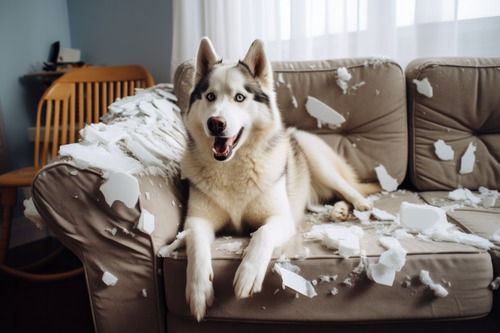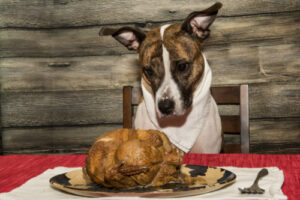Dogs thrive on routine and companionship, which is why some struggle when left alone. Dog separation anxiety is a condition that affects countless households, creating stress for both pets and their families. Recognizing the signs early and understanding what it means for your dog can make a big difference in their daily life. If you’ve ever returned home to chewed furniture, constant barking, or an anxious pup at the door, you may have seen the impact of separation anxiety firsthand. This blog will help you understand dog separation anxiety, highlight the signs to look for, and share supportive ways to help your pet feel more comfortable.
What Is Dog Separation Anxiety?
Dog separation anxiety occurs when a dog experiences distress after being left alone or separated from their owner. While it may seem like your pet is simply misbehaving, these behaviors are usually driven by fear, stress, or uncertainty. Unlike boredom, separation anxiety is an emotional response tied to attachment.
Why Some Dogs Develop Separation Anxiety
Several factors can contribute to dog separation anxiety:
- Change in routine: Dogs thrive on predictability. A sudden change in work schedules or household routines can trigger anxiety.
- Past experiences: Rescue dogs or pets who have been rehomed may be more prone to anxiety due to past instability.
- Overattachment: Some dogs become overly dependent on their owners, struggling to cope with even short absences.
- Lack of early independence training: Puppies not gradually introduced to alone time may have difficulty adjusting later in life.
Common Signs of Dog Separation Anxiety
Recognizing the signs of dog separation anxiety is the first step toward helping your pet. While symptoms may vary, many dogs display a combination of physical and behavioral changes when left alone.
Vocalization and Noise
Barking, whining, and howling are among the most common signs. Dogs with separation anxiety may continue vocalizing for long periods after their owner leaves, often in an attempt to seek attention or express distress.
Destructive Behaviors
Chewing furniture, scratching doors, tearing pillows, or digging at windows are not signs of spite but symptoms of panic. Dogs channel their nervous energy into destructive outlets when they cannot cope with being alone.
Accidents in the House
Even house-trained dogs may urinate or defecate indoors when separation anxiety strikes. These accidents are usually stress-related rather than intentional.
Pacing and Restlessness
Some dogs walk in circles or pace around the house until their owner returns. This repetitive motion helps them release nervous energy.
Escape Attempts
Dogs with severe separation anxiety may try to escape through doors, windows, or crates. These attempts can be dangerous, leading to injury.
How Dog Separation Anxiety Affects Families
Dog separation anxiety doesn’t just affect pets, it impacts households as well. Families often feel frustrated, helpless, or guilty about leaving their pets behind. Constant cleaning, property damage, and noise complaints from neighbors can add to the stress. More importantly, watching a beloved dog struggle with fear and anxiety can be emotionally difficult. Many families adjust their daily routines, decline social invitations, or avoid travel to minimize their dog’s distress. Understanding the underlying cause can help pet owners approach the situation with patience and compassion.
How Your Veterinarian Can Support Dogs with Separation Anxiety
Veterinarians play an important role in helping dogs and their families manage separation anxiety. While every dog is unique, veterinarians can:
- Rule out medical issues: Sometimes, accidents or unusual behaviors are caused by underlying health conditions rather than anxiety.
- Provide guidance: Veterinarians can recommend behavioral strategies, environmental enrichment, or referrals to professional trainers.
- Discuss treatment options: In some cases, medical support may be appropriate as part of a broader treatment plan.
If you suspect your dog is experiencing separation anxiety, contacting a veterinarian is the best next step. At Best Friends Animal Hospital in Manchester, NH, our team is glad to help families navigate these challenges with compassion and expertise. Call us today at (603) 625-2378 to schedule an appointment.
Ways to Support a Dog with Separation Anxiety at Home
While your veterinarian should always be your first point of contact, there are general strategies pet owners can try to help their dog feel more secure.
Create a Calm Environment
Dogs respond to their surroundings. Leaving them in a safe, quiet space can reduce stress. Familiar toys, comfortable bedding, and calming sounds may help them settle when left alone.
Encourage Independence
Gradually increasing the time your dog spends alone can help build confidence. Short absences followed by calm reunions teach dogs that being alone isn’t permanent.
Provide Mental Stimulation
Interactive toys, puzzle feeders, or safe chew options can keep dogs occupied and distracted. A mentally engaged dog is less likely to dwell on your absence.
Exercise and Routine
Regular exercise helps release excess energy and promotes relaxation. Pairing activity with a consistent schedule creates structure, which dogs with anxiety often crave.
Helping Your Dog Live with Less Stress
Dog separation anxiety can feel overwhelming, but it doesn’t define your pet’s future. With the right support and guidance, dogs can learn to cope with alone time more comfortably. Pet owners who remain patient and proactive often see meaningful progress over time. If you’re concerned your dog may be experiencing separation anxiety, reach out to Best Friends Animal Hospital in Manchester, NH. Our compassionate veterinary team can help you find solutions that work best for your dog’s needs. Call us today at (603) 625-2378 to schedule an appointment and give your dog the comfort and confidence they deserve.





